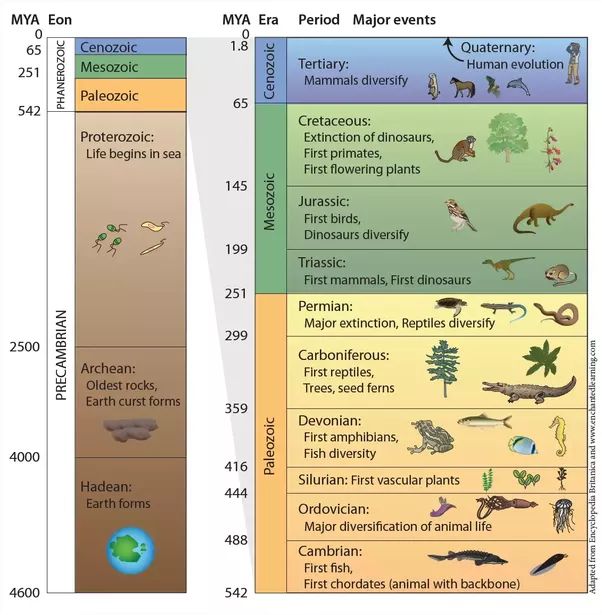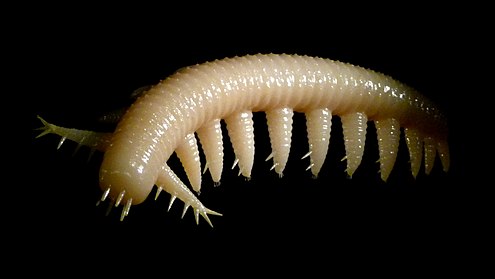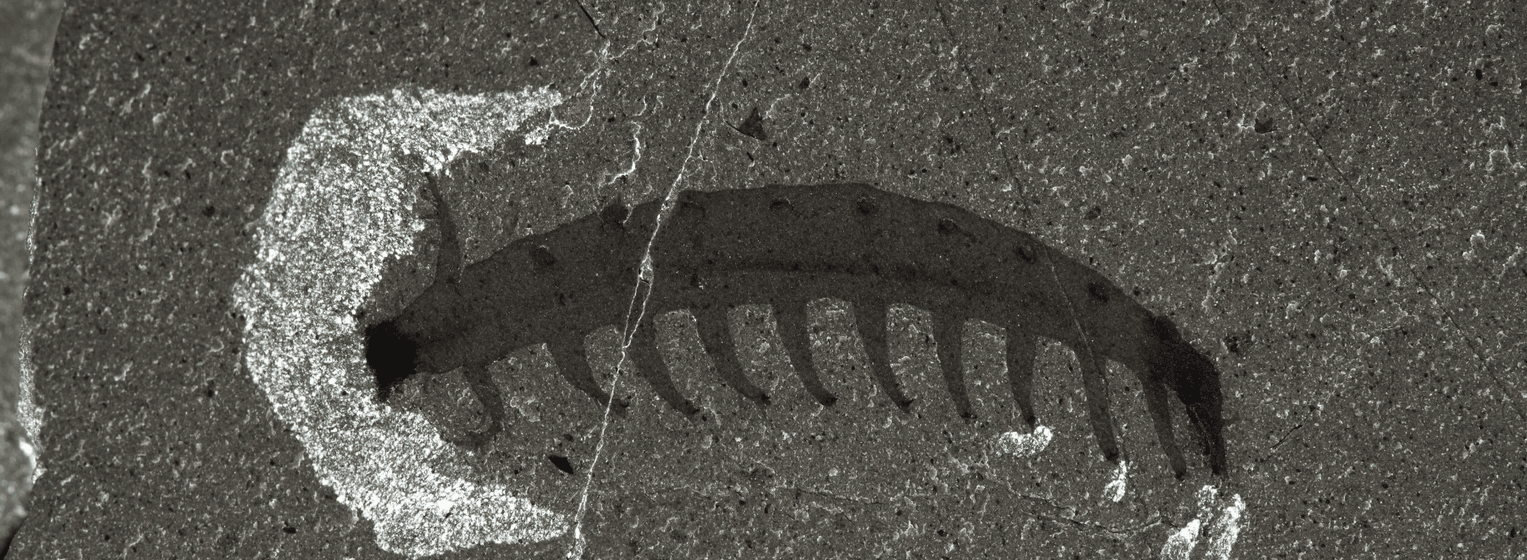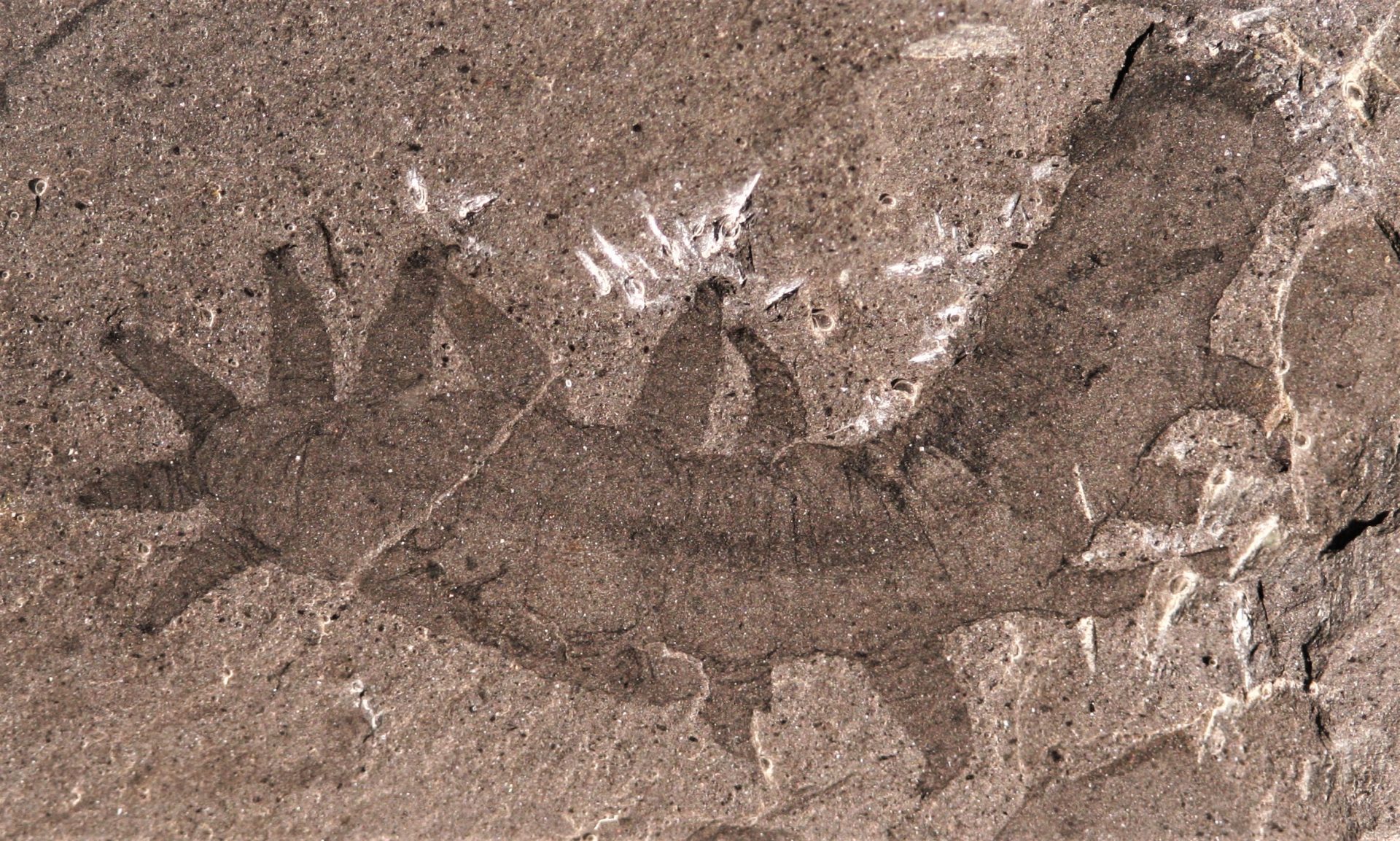Prehistoric Creature Feature!! Spotlight on Aysheaia pedunculata
Prehistoric Creature Feature!! Spotlight on Aysheaia pedunculata


cross-posted from: https://lemmy.ml/post/13725497
Title photo- life reconstruction of Aysheaia pedunculata
Travel back in time to the Cambrian Era, a period famous for the diversity of its life forms!
Lasting approximately 53.4 million years from the end of the preceding Ediacaran period 538.8 million years ago (mya) to the beginning of the Ordovician period 485.4 mya. It is a period where the atmosphere had elevated concentrations of oxygen, and the global temperature increased-creating a temperate world
Geological timescale from here
Scientists believe that the higher oxygen levels, and warmer climate contributed to the incredible diversity of life that occurred in the oceans.
However, on land it was mostly barren...complex lifeforms were non-existant and would have been restricted to mollusks and athropods emerging from the water to feed on micobes in slimy biofilms
The Cambrian is unique as it had unusually high deposits of lagerstätte sedimentary deposits, these sites offer exceptional preservation of 'soft' organism parts, as well as their harder shells which means that the study and understanding of the fossilized life forms surpasses some of later periods
Which brings us to Aysheaia!
It is an extinct genus of soft-bodied lobopodian, known from the Middle Cambrian Burgess Shale of British Columbia, Canada source
Described as looking like a 'bloated caterpillar' with spines. It was a segmented worm like animal 1 to 6 cm in length and about 5 mm wide
Comprised of 10 body segments with each segment having a pair of spiked annulate legs (consisting of rings or ringlike segments). It did not have a separate head, its mouth occupied the front of the body along with 6 finger like projections, and 2 grasping limbs on it's 'head'.
Diagrammatic reconstruction of Aysheaia pedunculata
Reconstruction of A. pedunculata
It was similar to modern terrestrial Onychophora (velvet worms). However, it differs due to a lack of jaws and antennae, and possible lack of visual organs, and the terminal mouth...
Above, Photo of Velvet Worm (Euperipatoides sp.) by Stephen Zozaya
Aysheaia is believed to have grazed on prehistoric sponges gripping onto them with it's many claws. The shape of it's mouth suggests that it was a predator. It probably used the paired structures on it's head to grasp hold of its prey, and then pass it to the finger like projections around its mouth
And now for some fossils!
Above, Lobopodian Aysheaia pedunculata Walcott, 1911, USNM 365608 from the Stephen Formation (Cambrian Series 3, Stage 5), British Columbia, Canada here
Above, Aysheaia pedunculata (ROM 61108). Complete specimen preserved laterally showing limbs and gut trace. Specimen length = 20 mm here
Above, Aysheaia, a worm-like animal with annulated legs, from the Burgess Shale, Canada here
Also this really awesome diorama of life under the Cambrian sea
Above, Burgess Shale Biota (L-R) Aysheaia, annelid worms, Olenoides trilobite, Marrella here
Well I hope you enjoyed this post (hopefully the first of many) of ancient invertebrates, and as usual my disclaimer that I'm not an expert, I just like sharing fun things!
All information via wikipedia here and here, and not wikipedia from here and here
edit, formatting was a bit doolally








